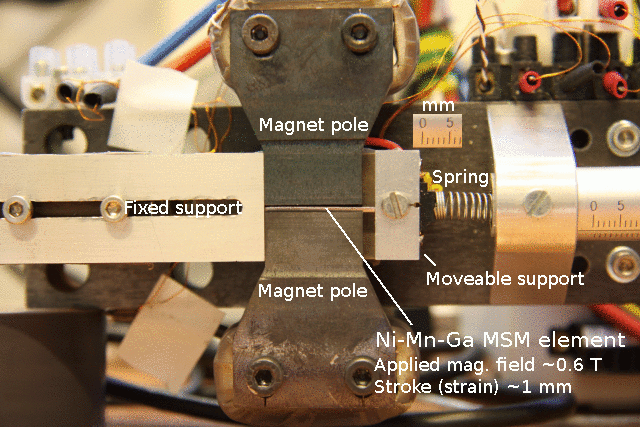Magnetic shape memory alloys (MSMAs) are a special kind of shape memory alloys (SMAs), in which the ferroelastic martensite microstructure is coupled to a ferromagnetic microstructure [1]. Such coupling enables unique magneto-mechanical effects and functionality in which martensitic phase transformation is not directly included. Instead, magnetic-field-driven motion of martensite twin boundaries mediates the effects. That brings strong speed advantage (~100x) over the ordinary SMAs. The most known effect is magnetically induced reorientation (MIR) of martensite, i.e., fast (~1 kHz [2]) giant straining up to 12% [3] in magnetic field. With simultaneous large strain and speed, the MSMAs may fill the application niche between SMAs and magnetostrictive materials3. Other functional behaviors closely related to MIR are e.g. magnetoplasticity, magnetoelasticity and magnetically assisted superelasticity, as well as strain-induced change of permeability. Ferromagnetic Ni‑Mn-Ga alloys are the most typical and the most studied representatives of MSMAs [3,4,5].

[2] S. Wilson et al. Materials Science and Engineering R 56 (2007) 1.
[3] A. Sozinov, N. Lanska, A. Soroka, W. Zou, Appl. Phys. Lett. 102 (2013) 021902.
[4] A. Sozinov, N. Lanska, A. Soroka, L. Straka, App. Phys. Lett. 99 (2011) 124103-1.
[5] L. Straka, A. Sozinov, J. Drahokoupil, et al., J. App. Phys. 114 (2013) 063504-1.